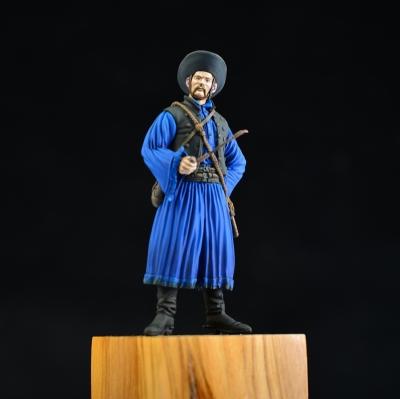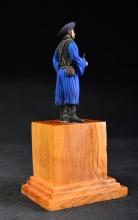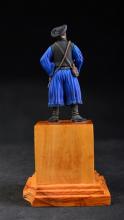Enter the shop
« Back
Description:
The horseherd is a typical Hungarian trade. The domestic animals were held in a big area in the 19th century. The horseherds and domestic animals lived together in the desert from early spring till late fall, while also they spent the winter outside together with the animals. The benefit of grazing was that only the healthy ones survived.
The horseherd is always the king of shepherds. His responsibility is to keep the herd together, strong and most of the time have to sit on the saddle around the clock. They always use the best, fastest horse from the herd. His duty is to shepherd the herd, breaking in the ponies, and catch the horses. After work while the horses were grazing they spend time to test their own skills and challenge the horses. They also train their horses to learn skill moves. Laying a horse originates from the time when the poor lad or the wilderness outlaw was hiding from the armed man. He laid the horse behind the shrub or mound and hide behind the horse. He also taught the horse to stay silent, not to neigh, not even if hears running fire or whip bounce. Sitting is an unnatural position for a horse, however they learned how to do it for their maser's demand.
The horseherd's most important equipment is his whip. They use it to shepherd, and in their free time they do whip spinning. Now days the horseherd live in different style, however they learn the same skills and keep the tradition for the next generation.
Outfit for the horseherd:
Dress: loose shirt-trousers, vest, pelisse in winter time. The black hat usually has sided turned up brims and stipa.
Whip: short shaft, long, braided leather strap. Usually self-made.
Saddle: without any frame, no belting which would steady it under the stomach of the horse.
Hungarian horseherd (Csikós)
End user price: 24.00 €
To buy an item, you need to log in!
Code: HU-90001Name:Hungarian horseherd (Csikós)Material:resin
In stock
In stock
Hunikum product
Sculpted by Gyorgy Varczag
Boxart painted by Oliver Kovacs
Sculpted by Gyorgy Varczag
Boxart painted by Oliver Kovacs
Description:
The horseherd is a typical Hungarian trade. The domestic animals were held in a big area in the 19th century. The horseherds and domestic animals lived together in the desert from early spring till late fall, while also they spent the winter outside together with the animals. The benefit of grazing was that only the healthy ones survived.
The horseherd is always the king of shepherds. His responsibility is to keep the herd together, strong and most of the time have to sit on the saddle around the clock. They always use the best, fastest horse from the herd. His duty is to shepherd the herd, breaking in the ponies, and catch the horses. After work while the horses were grazing they spend time to test their own skills and challenge the horses. They also train their horses to learn skill moves. Laying a horse originates from the time when the poor lad or the wilderness outlaw was hiding from the armed man. He laid the horse behind the shrub or mound and hide behind the horse. He also taught the horse to stay silent, not to neigh, not even if hears running fire or whip bounce. Sitting is an unnatural position for a horse, however they learned how to do it for their maser's demand.
The horseherd's most important equipment is his whip. They use it to shepherd, and in their free time they do whip spinning. Now days the horseherd live in different style, however they learn the same skills and keep the tradition for the next generation.
Outfit for the horseherd:
Dress: loose shirt-trousers, vest, pelisse in winter time. The black hat usually has sided turned up brims and stipa.
Whip: short shaft, long, braided leather strap. Usually self-made.
Saddle: without any frame, no belting which would steady it under the stomach of the horse.








